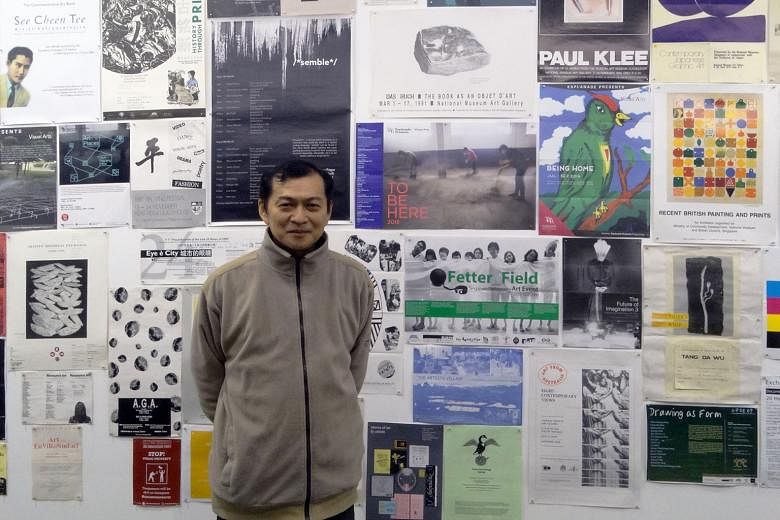The perpetual need for space dogs artist-archivist Koh Nguang How and his Singapore Art Archive Project - a dive into Singapore art history through nine decades of material, from yellowing catalogues to vintage photos of happenings at the National Museum Art Gallery.
This passion project, which started with newspaper clippings on the arts that he collected as a student in Nanyang Junior College back in the 1980s, has since become a lifelong preoccupation for the 52-year-old.
Over the years, he has amassed a million or so items to do with the arts dating from the 1920s, and the collection is still growing.
But the scramble for space, which is hard to come by and even harder for the full-time artist to afford, continues. He puts his items in commercial storage as well as in his three-room Housing Board flat in Yishun and his mother's four-room flat in the same block.
"I've changed the size of my commercial storage space three times in the last five years," he says.
He is now renting a 3x3x4.5m storage space at a discounted rate of $644 a month, "without air-conditioning or climate control, just the cheapest space".
And each Chinese New Year, the items he stores in the living room of his mother's home, where he usually lives, have to make way for guests.
"Chinese New Year is the worst time for my archives. It has been the cycle of space and no space with our two flats. But for how much longer?" asks Koh, who is single. "My mum is getting older - she's 77 now. If she passes on, her flat will be sold by the siblings. Then I'll have only mine."
He tries to keep older and more fragile materials in his flat, away from sunlight and humidity, covering windows with dark cloth to block out the light.
While he has been sharing bits of his collection on Facebook since 2010, the bulk of it has yet to be digitised due to copyright issues.
Most of his items have not been scanned and the ones that have are saved on CDs, DVDs and hard disks. There were times, he recalls, when older files could not be read by newer computers.
Koh is now in South Korea at the end of a three-month residency at the Asia Culture Centre (ACC), deep into his research on three Singaporean artists: The Artists Village founder Tang Da Wu, Cultural Medallion recipient Chng Seok Tin, and pioneer artist Shui Tit Sing.
The National Gallery Singapore is presenting part of his Singapore Art Archive Project as an exhibition at the ACC Library Park in Gwangju, which will run till April.
National Gallery Singapore curator Charmaine Toh says Koh's photo documentation of performances from the late 1980s to the 1990s has been invaluable in its research of art practices in Singapore during the time.
"In many cases, it is the only visual document allowing researchers to 'see' these important performances, which were time- and site-specific and cannot be re-created."
Part of Koh's archives have been on display at exhibitions - among them his Errata shows, which have been held in the former Singapore History Museum (now the National Museum of Singapore), and his Artists In The News exhibition at the 2011 Singapore Biennale.
He has received research and artist fees for some of his exhibitions, but laments that "there's no grant to apply for to support an archive".
"As one of the few museum workers in the 1980s, my working experience, collections of art and documentation of events and artists are valuable basic resources," he says.
His first job was as curatorial assistant at the National Museum Art Gallery from 1985 to 1992, and it fuelled the growth of his collection.
He started recording events such as exhibitions, opening ceremonies and press conferences and added new material such as invitations, catalogues, posters and videos.
Though the struggle for space gets tougher each year, he hopes to soldier on with his archive.
But he is also resigned to its uncertain future, should he no longer be able to pay for storage space.
Then, he says: "I might end my archive project, unless I can improve my financial situation by selling as much as people want of my archives."



